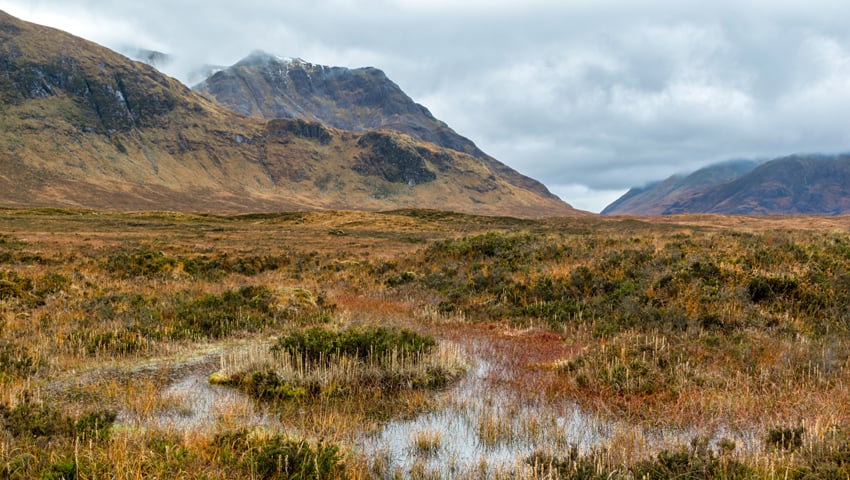Scientists from The University of Manchester, The University of Aberdeen and Newcastle University have found that the restoration of upland peatlands is a highly effective strategy for reducing downstream flooding.
New modelling approaches combined with long-term data collection on the peatlands of Kinder Scout where restoration work has taken place have allowed the experts to demonstrate that meaningful flood protection can be delivered during large storms, and has the potential to offer significant protection to communities at risk of flooding in locations where traditional hard engineering may not be economically viable.
The model was built using data from a field experiment conducted with Moors for the Future Partnership looking at the impact of restoration on runoff on Kinder Scout in the south Pennines. In 2022, the Kinder Scout National Nature reserve managed by National Trust was extended – partly in recognition of the importance of the scientific research that was taking place there. The new findings further emphasise the value of controlled long-term landscape experiments in understanding the impact of peatland restoration work.
Using new methods of modelling flood levels in the town of Glossop, which lies below the moorland peaks of Bleaklow and Kinder Scout in the Peak District, the team have demonstrated that fully restoring 41 per cent of the upstream catchment via re-vegetation, gully blocking and sphagnum planting makes it more than 90 per cent likely that the magnitude of a 100-year flood event would be reduced by more than 20 per cent. If only 20 per cent of the catchment is restored, they found that this would be 66 per cent likely to reduce it by 10 per cent.
Re-vegetating peatlands reduces downstream runoff because increased roughness of the vegetated surface slows the flow of water across the peatland. During a storm, a delay of some of this runoff means that the river peaks later and lower than it would have in an unrestored situation.
The peatlands of northern England are unusual as they have a limited presence of sphagnum moss, which is a mainstay of most peatland vegetation worldwide – but atmospheric pollution from the chimneys of northern England during the Industrial Revolution and other pressures on the landscape led to widespread loss of this moss cover. The experts have demonstrated that replanting this moss is a highly effective mechanism for slowing the flow of water across the peatland surface. Planting sphagnum into restored peatlands is a win-win strategy, as it also enhances carbon storage and biodiversity.
Salim Goudarzi, lead author of the study, said, “This study is conducted using the latest hydrological modelling science but what really sets it apart is the quality of the observations behind it – the empirical data from Kinder Scout has been a real privilege to work with. In many ways our study is as concrete of a proof-of-concept as possible. We hope our modelling study will underpin expansion of ongoing peatlands restoration across northern England which will deliver a wide range of ecosystem benefits alongside flood protection.”
Professor Martin Evans, from the University of Manchester, said, “Peatland restoration already delivers great biodiversity and carbon storage benefits, and today’s results clearly show that planting sphagnum on the moors to replace the mosses that were lost through industrial pollution in the past is a no-regrets restoration strategy that delivers a wide range of benefits.”
Newcastle University’s Dave Milledge said, “This study is exciting because it shows that small changes over large areas really can stack up to make a big difference. It also demonstrates that it is possible to make changes that are good for carbon storage, for ecosystems and for people downstream, as well as showing that changes in the hills can make a difference further downstream. But we need to remember that different places and different interventions will behave differently – not all peatland restoration will deliver flood risk benefit, nor should it be expected to.”
